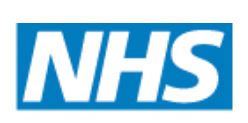- Canada Intends to Further Restrict Promotion of Opioids (raps.org)Notice of Intent to Restrict the Marketing and Advertising of Opioids (canada.ca)
Health Canada this week said it intends to restrict the marketing and advertising of opioid drugs...Evidence suggests that the marketing and advertising of opioids has contributed to increased prescription sales and availability of opioids...From presentations sponsored by opioid manufacturers at conferences to advertisements published in medical journals, these practices “can take many forms of direct and indirect activities and incentives.”...Manufacturers of opioids with a presence in the Canadian market are “strictly prohibited” from advertising to the public, but not to healthcare professionals...Health Canada...set forth additional authority for the Minister of Health to require implemented risk management plans from opioid manufacturers. These plans must include the preclearance of all materials related to opioids and provided to healthcare professionals to safeguard the compliance of their marketing clearances.
- Arizona Enacts Law: Pharmaceutical Companies to Legally Communicate Off-Label Treatment to Medical Professionals (policymed.com)
...pharmaceutical companies are not permitted to discuss off-label, legal, alternative uses for an approved drug with physicians and other healthcare professionals as regulated by the FDA. However, a bill in Arizona, HB 2382 that passed unanimously (The Free Speech in Medicine Act) has changed that...Governor Doug Ducey signed the bill into law, lifting the aforementioned off-label promotion restriction and allowing drug companies to communicate with doctors and other healthcare providers about safe and effective alternative uses for approved prescription drugs...The law...safeguards the free speech rights of pharmaceutical industry members to share truthful research and information about FDA-approved medicines...HB 2382...only protects the sharing of information that is "not misleading, not contrary to fact, and consistent with generally accepted scientific principles;" and it only applies to communication between pharmaceutical manufacturers and licensed healthcare professionals. The bill does not permit pharmaceutical manufacturers to advertise off-label uses directly to the public...Since Arizona enacted this protection for industry, it is likely to expand options in doctors’ toolkits, enhance patient autonomy, and increase access to healthcare. It will be interesting to see if any other states will follow suit and implement similar laws...
- UK healthcare workers back pharma payments disclosure (pharmatimes.com)
..majority of healthcare professionals in the UK support greater transparency on payments received from pharmaceutical companies, but some feel the move could make working with the industry more difficult…87% agreed that payments from pharma to individually named healthcare professionals should be disclosed…32% of healthcare professionals surveyed feel the disclosure of individual payments is unnecessary, while 26% believe that doing so will adversely affect medical innovation… survey results come as pharmaceutical companies gear up to unveil payments and other ‘transfers of value’ …on a publicly accessible database…the new ‘Sunshine rule’, which comes into force next year, NHS staff who fail to disclose perks received from drug companies could face being disciplined, dismissed or even sent to jail for breach of the Bribery Act.
- Purdue Pharma unveils opioid abuse prevention website (drugstorenews.com)Team Against Opioid Abuse (teamagainstopioidabuse.com)
Purdue Pharma is launching a new effort to prevent opioid abuse…announced its new Team Against Opioid Abuse website that’s meant to instruct people about how to reduce opioid abuse and misuse and inform about abuse-deterrent technologies….importance of preventing abuse of prescription drugs and outlines FDA guidelines on abuse-deterrent labeling…includes information on how to identify opioid formulations with abuse-deterrent properties for healthcare professionals…
- FDA to study how drug promotion affects doctors’ decisions (biopharmadive.com)
The Food and Drug Administration is planning to survey 2,000 healthcare professionals to better understand how prescription drug promotion affects the decisions they make...Promotional activities include meetings with pharmaceutical sales representatives, presentations given at industry-sponsored events, and journal or direct mail advertisements. In 2012, drugmakers spent north of $24 billion marketing their products to physicians, according to data cited by the FDA..."Although HCPs (healthcare professionals) are learned intermediaries, like most people, they may rely on heuristics in making decisions and may have cognitive biases in the type of information they attend to at any given time. They may be persuaded by strong statements and may not have the time to ascertain accuracy of such information," the FDA wrote in a notice posted on the Federal Register on March 15..."There is little qualitative research on people’s attitudes to promotion, and this is a major gap," the organization said. "In order to understand people’s perspectives and values more clearly, in‐depth interviews are needed...
- Pharma companies turn to LinkedIn to engage (mmm-online.com)
While the three granddaddy social networks, Facebook, Twitter and YouTube, have spent a decade publicly duking it out for share of human attention-span and commercial usefulness, LinkedIn has quietly and efficiently evolved to become an essential pillar of corporate practice, for individuals and organizations alike...LinkedIn has been something of an enigma and part of the reason has been the difficulty of pinpointing its core purpose. For a long time, it was seen as a professional advancement network, crudely dubbed “Facebook for jobs.” But while career advancement and recruitment is still a major function, over time LinkedIn has evolved into an effective publishing platform for professional content, which has had profound implications for corporate communications and marketing activities...A big part of LinkedIn's appeal lies in the high level of engagement of its members and the potential for precise targeting of content...In the healthcare space, membership encompasses all stakeholder groups: pharma companies, patients, healthcare professionals, marketing agencies, hospitals, investors and, of course, employees...The evolution of LinkedIn...to a publishing platform has had a profound effect on social-media responsibilities within pharma organizations...LinkedIn is now a fully fledged communications vehicle...Regulatory considerations are obviously paramount with any pharma-generated social-media activity...
- DNA4Life announces U.S. launch of its pharmacogenetics report (drugstorenews.com)
DNA4Life announced the…launch of its Pharmacogenetic Report, which will be available…to patients… DNA4Life’s test analyzes a person’s DNA to predict how they will respond to 120 commonly prescribed medication. One of the main goals of pharmacogenetics is avoiding adverse drug reaction…"Our differentiated and more comprehensive analysis will assist healthcare professionals in customizing a personalized treatment plan for their patients…particularly those being treated for chronic conditions, like high cholesterol, depression, ADHD or pain."
- 5 ways to streamline prior authorization, improve outcomes (fiercehealthcare.com)2017 AMA Prior Authorization Physician Survey (ama-assn.org)
Physicians say they face long wait times for insurers to process prior authorizations and the delays can negatively impact patient outcomes...The American Medical Association surveyed 1,000 physicians, and 64% said they wait at least one business day for insurers to decide on prior authorization. Nearly one-third (30%) said they wait at least three business days for decisions...The vast majority of physicians surveyed said that lag time can have serious consequences for patients; 92% said the prior authorization process can lead to delays in access to care, and 78% said that waiting for a decision from insurers "sometimes, often or always" causes patients to abandon certain treatments entirely...The AMA survey illustrates a critical need to help patients have access to safe, timely and affordable care, while reducing administrative burdens that take away from patient care...Six major industry groups—including America's Health Insurance Plans and the AMA—joined forces to improve the prior authorization process. The groups agreed to five steps:
1. Reduce the number of healthcare professionals subject to prior authorization requirements based on their performance, adherence to evidence-based medical practices or participation in a value-based agreement with the health insurance provider.
2. Review the services and medications that require prior authorization on a regular basis and eliminate requirements for therapies that no longer warrant them.
3. Improve communication between health insurance providers, healthcare professionals and patients to minimize delays in care and ensure clear prior authorization requirements, rationale and changes.
4. Protect the continuity of care for patients on an ongoing active treatment or a stable treatment regimen when there are changes in coverage, insurance providers or prior authorization requirements.
5. Accelerate industry adoption of national electronic standards for prior authorization and improve transparency of formulary information and coverage restrictions at the point-of-care. - Pharmacy-physician partnership hikes efficiencies (drugtopics.modernmedicine.com)
Sharing electronic health records access between physicians and pharmacists can improve workflow efficiencies for both… that pharmacist involvement in patient’s medication therapy improves adherence and reduces costs. However, since it is not financially feasible for many physicians to employ full-time pharmacists, collaboration is often the best alternative…Sharing EHR access is one way that collaboration can benefit patients while simultaneously improving workflow efficiencies…Pharmacists were able to more readily collect data related to patients’ medical conditions, prescribed medications, lab data, and treatment plans. Communication between the pharmacists and providers was significantly enhanced...
- Sepsis: 4 things formulary managers can do to save lives, resources (formularyjournal.modernmedicine.com)
Everyone is a potential victim of the dangerous condition known as sepsis, which kills more than 258,000 Americans each year…. Early recognition and immediate treatment can reduce the morbidity and mortality of sepsis. In other words, healthcare professionals need to be fast and loud to beat sepsis.
The following are 4 specific things formulary managers can do in the battle against sepsis:
- Increase consumer and patient awareness
- Act fast: Treat sepsis as a medical emergency
- Know and screen for risk factors
- Participate in continuing education about sepsis









